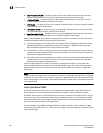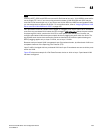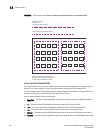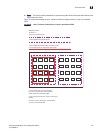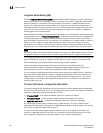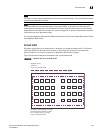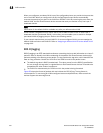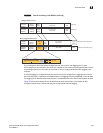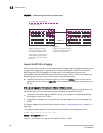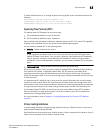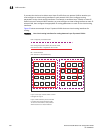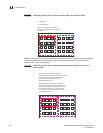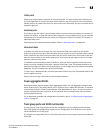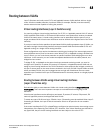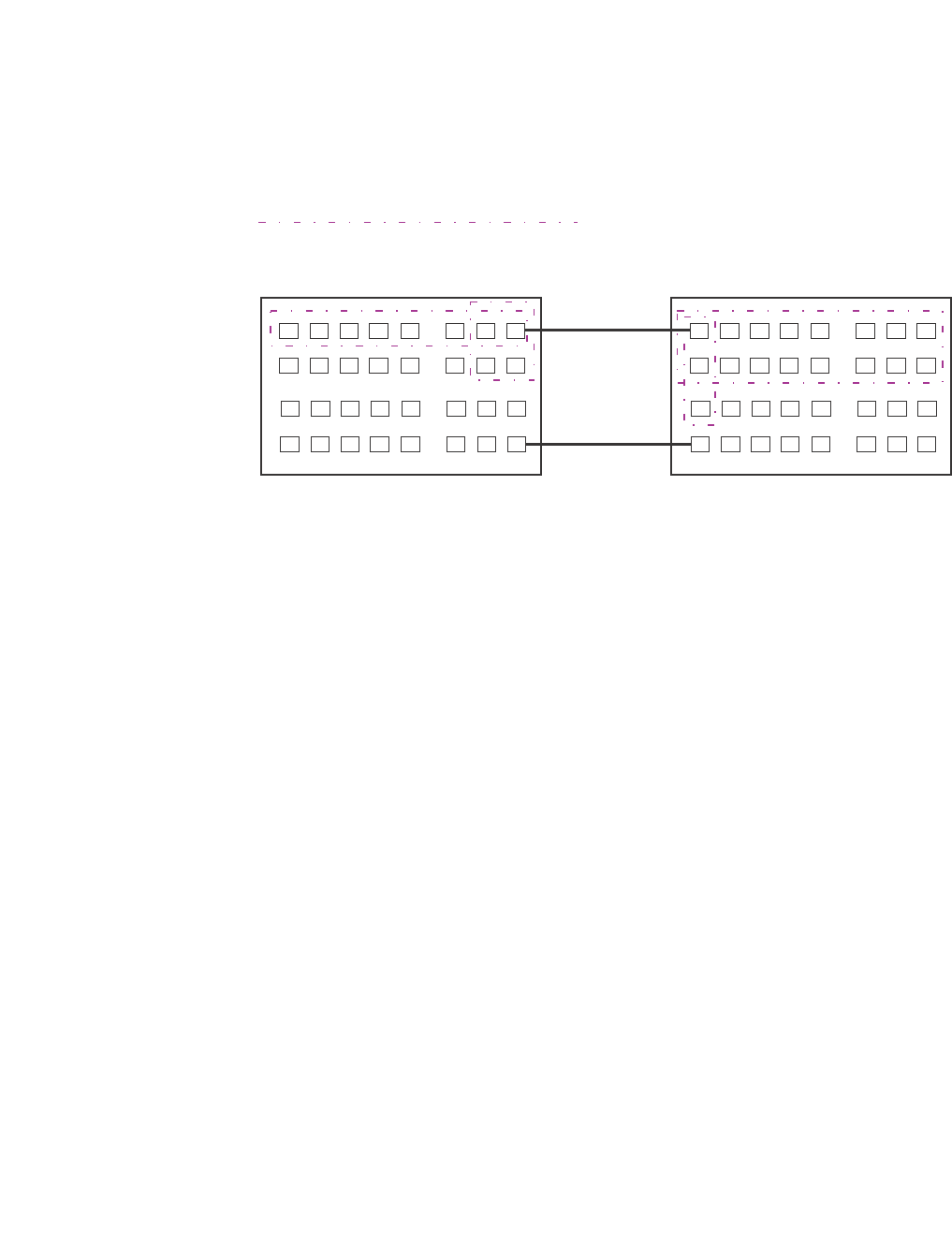
436 PowerConnect B-Series FCX Configuration Guide
53-1002266-01
VLAN overview
13
FIGURE 90 VLANs configured across multiple devices
Support for 802.1Q-in-Q tagging
Dell PowerConnect devices provide finer granularity for configuring 802.1Q tagging, enabling you to
configure 802.1Q tag-types on a group of ports, thereby enabling the creation of two identical
802.1Q tags (802.1Q-in-Q tagging) on a single device. This enhancement improves SAV
interoperability between Dell PowerConnect devices and other vendors’ devices that support the
802.1Q tag-types, but are not very flexible with the tag-types they accept.
• PowerConnect B-Series FCX devices support one value for tag-type, which is defined at the
global level, and one value for tag-profile, which is defined at the global and interface level of
the CLI.
802.1 Q-in-Q tagging for PowerConnect B-Series FCX Series devices
The following enhancements allow the PowerConnect B-Series FCX devices, including those in an
IronStack, to use Q-in-Q and SAV, by allowing the changing of a tag profile for ports:
• In addition to the default tag type 0x8100, you can now configure one additional global tag
profile with a number from 0xffff.
• Tag profiles on a single port, or a group of ports can be configured to point to the global tag
profile.
For example applications and configuration details, refer to “Configuring 802.1Q-in-Q tagging” on
page 484.
To configure a global tag profile, enter the following command in the configuration mode.
PowerConnect(config)# tag-profile 9500
Syntax: [no] tag-profile <tag-no>
<tag-no> - the number of the tag, can be 0x8100 (default), or 0xffff
User-configured port-based VLAN
T = 802.1Q tagged port
TT
T
T
T
T
Segment 1
Segment 2
T
Segment 2
Segment 1
Tagging is required for the ports
on Segment 1 because the ports
are in multiple port-based VLANs.
Without tagging, a device receiving
VLAN traffic from the other device
would not be sure which VLAN the
traffic is for.
Tagging is not required for the ports
on Segment 2 because each port is
in only one port-based VLAN.



